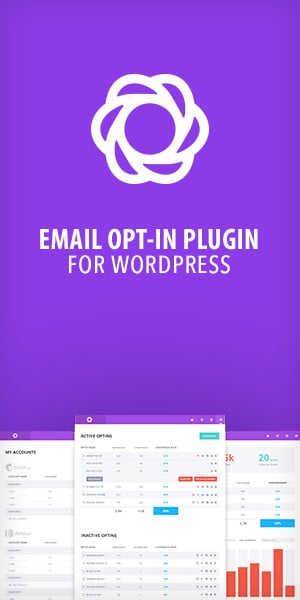User experience (UX) in on-page SEO is crucial for enhancing website visibility and user engagement. Recent studies show that websites with optimized UX can double their conversion rates by keeping visitors engaged. This post will explore how UX influences search engine rankings, the interplay between page design and content, and practical tips for improving site usability. Discover how a seamless user experience can boost your site’s performance and maintain audience interest.
Understanding the Importance of User Experience in On-Page SEO
User experience (UX) is a crucial element in the realm of on-page SEO. It serves as a bridge between your website and its visitors, directly influencing how search engines perceive and rank your content. When UX is prioritized, it can lead to improved search engine rankings and higher engagement. Let’s delve into how UX impacts SEO and why it’s essential for your digital strategy.
How User Experience Impacts Search Engine Rankings
Search engines, like Google, focus on providing users with the best possible results. They assess UX by measuring metrics such as bounce rates, dwell time, and click-through rates. A positive user experience often results in lower bounce rates and longer dwell times, signaling to search engines that your page is valuable and relevant.
- High bounce rates may indicate poor UX, leading to lower rankings.
- Engagement metrics contribute to search engine algorithms, influencing rank positions.
- Sites with better UX often enjoy more organic traffic and higher conversion rates.
Ensuring a seamless UX can lead to an increase in organic visibility and traffic, as search engines reward sites that meet user expectations.
The Connection Between UX and Page Load Speed
Page load speed is a critical aspect of UX that affects user satisfaction and search engine ranking. Slow-loading pages frustrate users, often causing them to leave before the site fully loads.
- Google considers page load speed as a ranking factor.
- Optimizing images, leveraging browser caching, and minimizing JavaScript can improve load times.
- Faster pages result in lower bounce rates and higher user engagement.
Prioritizing page speed enhances UX, encouraging users to stay longer and engage more with your content, which positively impacts SEO.
Role of Mobile Responsiveness in User Experience
With a significant portion of web traffic originating from mobile devices, mobile responsiveness is essential. Users expect websites to function smoothly across different devices without loss of functionality or content quality.
- Responsive design ensures accessibility on all devices, improving user satisfaction.
- Google’s mobile-first indexing emphasizes the importance of mobile-friendly sites.
- Responsive sites often see lower bounce rates and increased mobile traffic.
Incorporating mobile responsiveness into your web design not only enhances UX but also supports your SEO efforts by aligning with search engine expectations.
Key UX Elements That Enhance On-Page SEO
Enhancing UX on your website involves focusing on specific design elements that directly impact visitor engagement and satisfaction. These elements, when optimized, can significantly boost your on-page SEO, creating a more inviting and user-friendly environment.
Importance of Intuitive Navigation Design
Intuitive navigation is key to a positive user experience. Users should be able to find what they’re looking for without unnecessary clicks or confusion.
- Clear and logical navigation paths increase user satisfaction and retention.
- Breadcrumbs and search bars enhance navigation efficiency.
- User-friendly menus contribute to a seamless browsing experience.
Effective navigation design helps visitors engage more deeply with your content, improving site metrics that influence search engine rankings.
Improving Readability and Content Accessibility
Readable content is essential for keeping visitors engaged. Text should be easy to read and understand, allowing users to consume information without effort.
- Use clear fonts, adequate spacing, and contrasting colors for better readability.
- Organize content into headings, subheadings, and bullet points to enhance scannability.
- Provide alt text for images to improve accessibility for screen readers.
Prioritizing readability and accessibility not only helps users but also aligns with SEO best practices, making your content more appealing to a wider audience.
The Benefit of Interactive and Engaging Elements
Interactive elements such as videos, infographics, and clickable buttons can greatly enhance user engagement. These features encourage users to interact with your site, increasing dwell time and reducing bounce rates.
- Engaging elements capture user attention and promote longer visits.
- Interactive content can lead to higher conversion rates.
- Multimedia elements diversify content, appealing to different user preferences.
Incorporating these elements into your site not only improves UX but can also positively influence SEO by demonstrating valuable content to search engines.
Best Practices for Optimizing UX for Better On-Page SEO
Optimizing UX for SEO involves more than just design tweaks. It requires strategic planning and continuous improvement to cater to user needs and align with search engine requirements. Implementing best practices can elevate your site’s performance and ranking.
Strategies for Enhancing User Engagement
Encouraging user engagement is crucial for retaining visitors and improving SEO. Engaged users are more likely to interact with your content, signaling its value to search engines.
- Create high-quality, relevant content that resonates with your audience.
- Use clear calls-to-action to guide user interactions.
- Encourage social sharing to extend content reach.
Focusing on user engagement can lead to improved metrics, such as longer session durations and higher conversion rates, which benefit SEO.
Using Analytics to Measure UX Success
Analytics provide valuable insights into how users interact with your site. Understanding these metrics can help you identify areas for UX improvement and optimize your SEO strategy.
- Track user behavior metrics like session duration, bounce rate, and page views.
- Analyze heatmaps to understand user navigation patterns.
- Use feedback tools to gather direct user input on site experience.
Monitoring these analytics allows you to make data-driven decisions, enhancing UX and supporting stronger search engine performance.
A/B Testing for Continuous UX Improvement
A/B testing involves comparing two versions of a webpage to see which performs better in terms of user engagement. This method is effective for optimizing UX by identifying what works best for your audience.
- Test different design elements like colors, buttons, and layouts.
- Evaluate the impact of content changes on user behavior.
- Implement successful variations to enhance overall UX.
Continuous A/B testing ensures your site evolves with user preferences and stays competitive in search engine rankings.
Conclusion
User experience (UX) plays a crucial role in on-page SEO by influencing search engine rankings through elements like page load speed and mobile responsiveness. Key UX elements that enhance on-page SEO include intuitive navigation design, improved readability, and the use of interactive and engaging features. Optimizing UX involves strategies for boosting user engagement, leveraging analytics to gauge success, and conducting A/B testing for continuous improvement. A strong connection exists between UX and how search engines perceive web pages, affecting their visibility and ranking. Best practices for UX optimization ensure a seamless user experience, ultimately leading to better SEO performance.
FAQ
How does user experience impact on-page SEO for better rankings?
User experience directly influences on-page SEO by affecting metrics such as bounce rate, session duration, and page views. A seamless experience keeps visitors engaged, signaling to search engines that your site is valuable, which can boost rankings.
What are the best UX practices for improving on-page SEO in 2023?
Focus on fast loading speeds, intuitive navigation, and mobile-friendly design. Prioritize clear call-to-action buttons and ensure content readability. Use multimedia wisely to enhance engagement but maintain quick load times.
Why is user experience critical for on-page SEO success?
User experience is vital because it directly impacts how users interact with your site. Positive experiences lead to longer visits and more interactions, which in turn send positive signals to search engines, improving SEO performance.
How can optimizing UX design enhance your website’s SEO performance?
Optimizing UX design enhances SEO by improving user engagement metrics like dwell time and reducing bounce rates. Well-structured and visually appealing websites encourage users to explore more, signaling quality to search engines.
What are common UX pitfalls that can negatively affect on-page SEO?
Slow loading times, confusing navigation, and non-responsive mobile design are frequent pitfalls. Excessive pop-ups and poor readability also lead to high bounce rates, negatively impacting SEO.
How does mobile user experience influence on-page SEO metrics?
Mobile user experience affects SEO by determining how easily users can navigate and interact on smaller screens. A poor mobile experience can lead to high bounce rates and reduced dwell time, which can lower search engine rankings.




